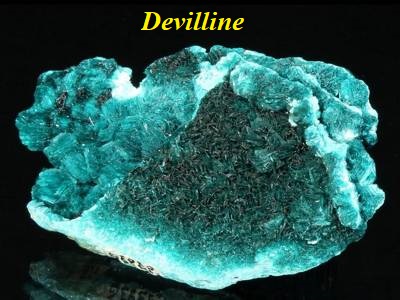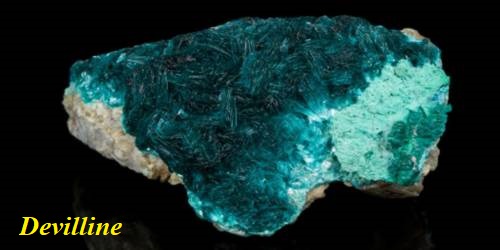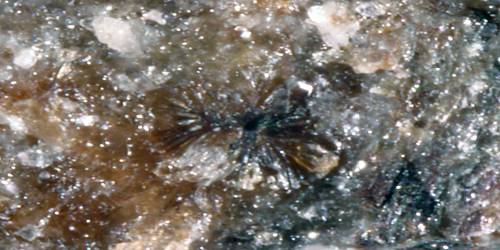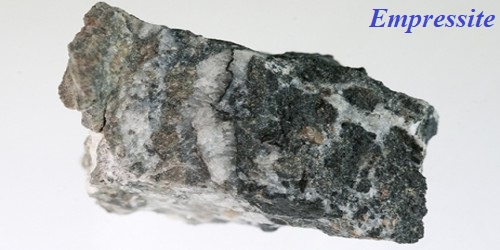Devilline is a sulfate mineral with the chemical formula CaCu4(SO4)2(OH)6•3H2O. The name originates from the French chemist’s name, Henri Etienne Sainte-Claire Deville (1818–1881). It forms as a secondary mineral in oxidized copper sulfide deposits and can be found of post-mine origin in dumps and on timbers. Devilline is soluble in water. It is found in mines all around the world.
Devilline crystallizes in the monoclinic system. Crystallographically, it contains three vectors of unequal lengths and two pairs of vectors are perpendicular while the other pair makes an angle other than 90°.
General Information
- Category: Sulfate minerals
- Formula: CaCu4(SO4)2(OH)63H2O
- Crystal system: Monoclinic
- Crystal class: Prismatic (2/m) (same H-M symbol)

Properties
Devilline is an anisotropic mineral, meaning that the mineral has different properties in different directions. Optically, this mineral is biaxial negative, meaning that it contains two optic axes. Devilline has a moderate mineral relief. Mineral relief refers to the way a mineral appears to stand out when viewed under polarized light and it is dependent on the mineral’s index of refraction.
- Color: green, bluish green; green in transmitted light
- Crystal habit: prismatic, lamellar, platy pseudohexagonal crystals
- Cleavage: perfect (001) distinct (110) and (101)
- Tenacity: Brittle
- Mohs scale hardness: 2.5
- Luster: vitreous, pearly
- Streak: light green
- Density: measured- 3.13 g/cm3 and calculated- 3.084 g/cm3
- Optical properties: biaxial negative
Occurrence
Devilline is a rare and unusual secondary mineral found in the oxidized portions of copper sulfide ore deposits. Because Devilline occurs in such oxidation zones, this mineral often is of post-mining origin. It is an uncommon mineral that occurs in localities in England, Slovakia, Germany, Italy, Namibia, Japan, New Zealand, the United States and many others.
Information Source:
















